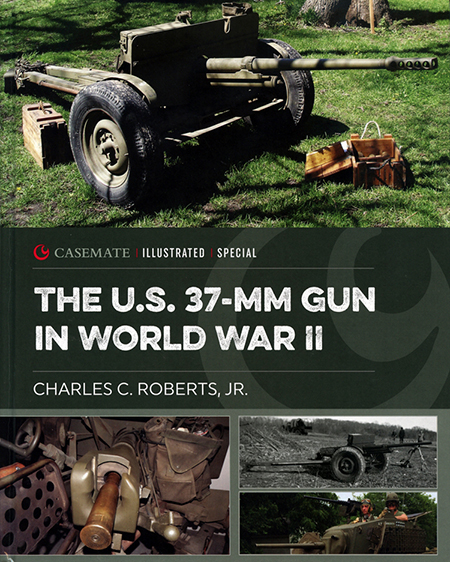
U.S. 37-mm Gun in World War II Book Review
By David L. Veres
| Date of Review | January 2024 | Title | U.S. 37-mm Gun in World War II |
|---|---|---|---|
| Author | Charles C Roberts Jr | Publisher | Casemate |
| Published | 2023 | ISBN | 9781636242521 |
| Format | 168 pages, hardbound | MSRP (USD) | $45.00 |
Review
An iconic American weapon enjoys special scrutiny and colorful coverage in the Casemate Illustrated range.
After a handy timeline and introductory overview, The U.S. 37-mm Gun in World War II charts the versatile design’s whole history in 168 lavishly illustrated pages across five chapters:
- Development of the 37-mm Gun
- The U.S. 37-mm Gun Design
- 37-mm Ammunition Usage in World War II
- 37-mm Gun With Armored Vehicles in World War II
- 37-mm Gun With Non-Armored Vehicles in World War II
A 37-mm weapon proved the “smallest practical design” to meet 1899 Hague Convention strictures. Militaries worldwide adopted the calibre – including the United States.
America’s entries in interbellum international 37-mm guns production proved powerful, versatile, and transportable. Versions variously served as tank and gun motor carriage armament, in towed anti-tank and anti-aircraft roles, for anti-strongpoint and training duties, and – as automatic weapons – aboard naval vessels and warplanes.
A compact crew of just two personnel – a gunner and a loader – could maneuver the gun, with only four required to lift it.
Nearly 19,000 were manufactured through 1943 – by which time advancements in German defenses restricted American 37-mm gun use to the Pacific Theater of Operations, where Japanese vehicles and emplacements remained more vulnerable.
Author Charles C Roberts Jr’s compact study surveys the whole story. Design. Ballistics. Ammunition. Vehicle armament. Mountings. Canister shot. Even Spigot grenades. And more.
Modelers and detail mavens will love it. The picture-packed volume includes dozens of period photos, museum shots, tech-manual excerpts, and archival drawings.
Two appendices, a selected bibliography, and an index complete the handsome hardback’s contents.
Recommended!
With thanks to Casemate Publishing for the review copy!







